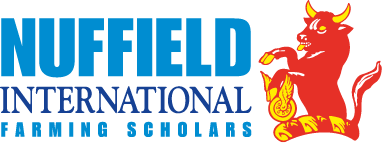Report Synopsis
Grams on grass: Strategies to give lamb growers an edge
Jessica Conlan
Maximising efficiency and profitability in lamb production requires a strategic focus on critical growth periods and the implementation of tailored management practices. By aligning resources with lambs' natural growth dynamics and environmental conditions, producers can optimise returns while promoting long-term farm sustainability.
Investing efforts and resources into the first five months of lamb growth is essential. During this period, lambs exhibit exceptional feed conversion efficiency and rapid weight gain. By prioritising nutrition and management during these formative months, producers can maximise growth potential and achieve significant economic returns with minimal input.
A successful operation is built on a system designed to suit the unique characteristics of the farm, including its climate, soil conditions, and seasonal variability. Tailoring management strategies to align with these factors ensures that lamb production remains resilient and adaptable to environmental changes, improving overall efficiency.
Incorporating diverse pasture mixes is another critical strategy. These mixes provide a variety of forages that complement lambs’ selective grazing behaviour, allowing them to maximise nutrient intake while maintaining optimal growth. This approach also supports better pasture health, reducing the reliance on supplementary feeding and improving the sustainability of grazing systems.
Addressing mineral imbalances in soil and pastures is equally important. By conducting detailed soil tests and rectifying deficiencies with customised mineral licks, producers can provide lambs with the precise nutrients they require for optimal health and development. This targeted supplementation improves growth rates, reduces health issues, and enhances overall flock productivity.
Finally, utilising soil moisture probe data offers a powerful tool for proactive farm management. By forecasting the magnitude of the upcoming spring flush, producers can make informed decisions about grazing, weaning, and supplementary feeding well in advance. This predictive approach minimises resource wastage and ensures that feed availability aligns with lamb growth demands.
By integrating these strategies, producers can enhance lamb productivity, optimise resource use, and improve profitability while maintaining sustainable farming practices.
Similar Reports
- 2023
Growing Support: Enhancing Mental Health and Wellbeing in Farming Communities
Sarah Crosthwaite - 2023
Regenerative farming practices and their impact on the soil health
Marcin Markowicz - 2023
Soil improvement strategies based on local and high value organic inputs
Dario Mujica - 2023
A Global perspective of how Maximum Residue Limits (MRLs) affect the Australian grain price and access to international markets
Tessa Dimond
